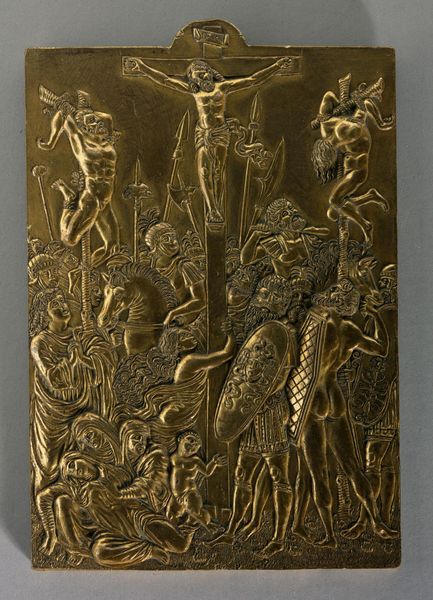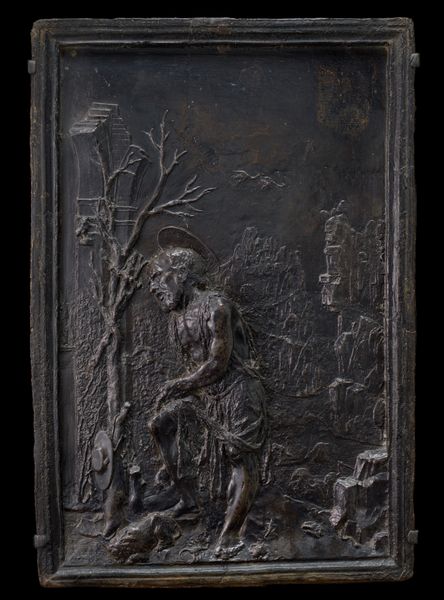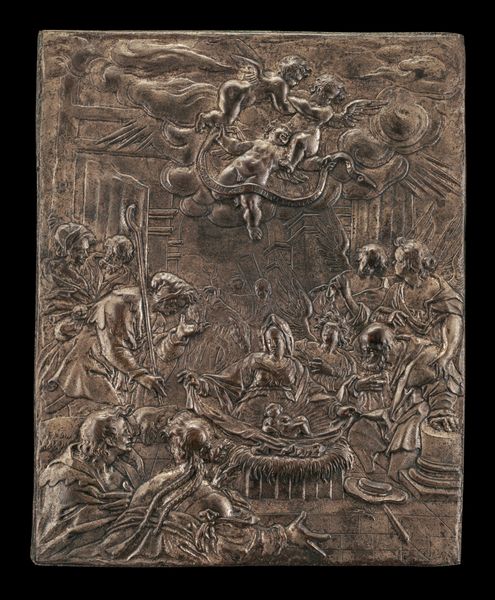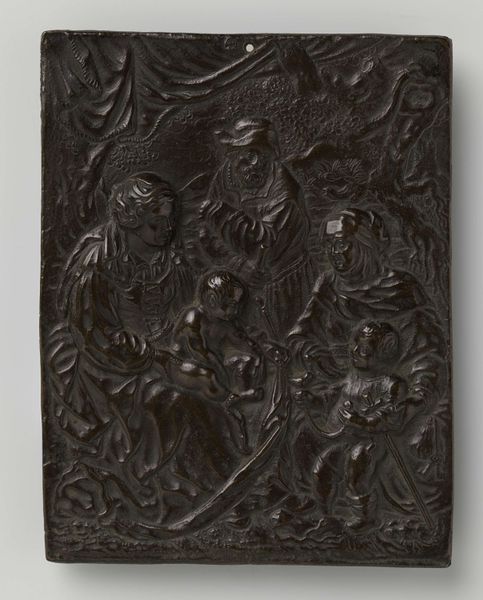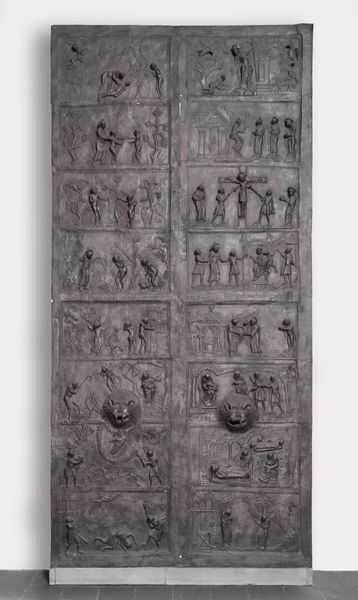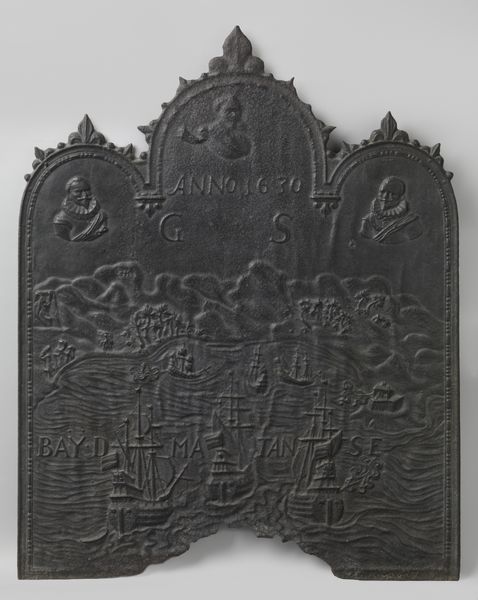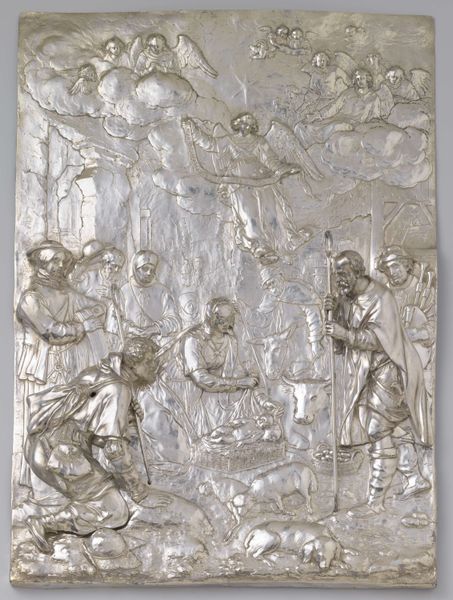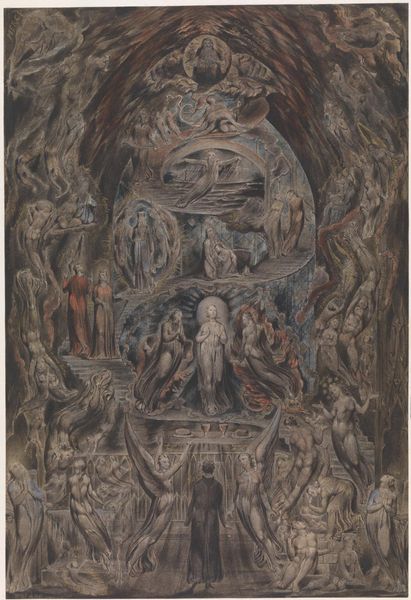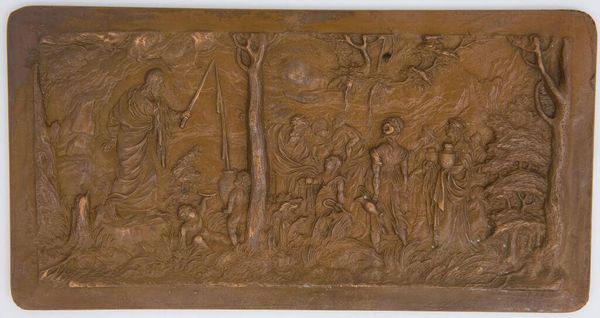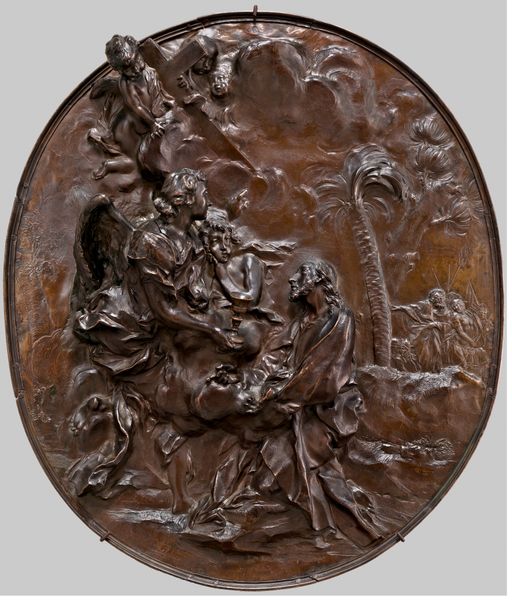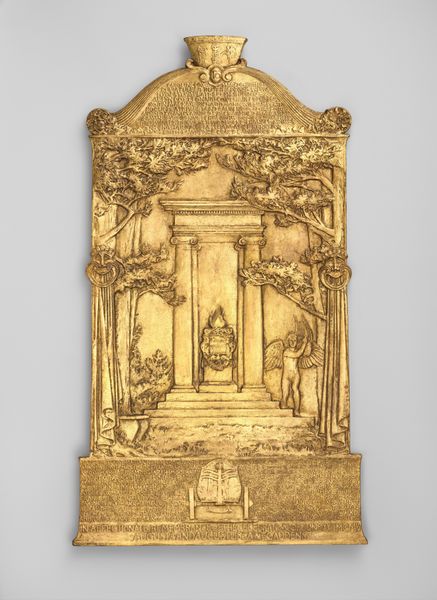
relief, sculpture, marble
#
stone
#
sculpture
#
relief
#
figuration
#
sculpture
#
history-painting
#
marble
#
italian-renaissance
Dimensions: height 54 cm, width 39.5 cm, depth 7.5 cm
Copyright: Rijks Museum: Open Domain
Editor: This marble relief, "Kruisiging" by Nicolas II Palardin, dates to around 1560, and the sheer number of figures depicting the crucifixion is overwhelming. What do you see in this crowded yet deliberate composition? Curator: Indeed. The crucifixion is not just an event; it's a dense nexus of emotional and theological significance. Look at how Palardin uses the three crosses not only to narrate, but also to organize the emotional chaos. How does your eye move across the figures at the base, toward the central cross? Editor: I'm drawn upwards, certainly. The figures at the bottom feel intertwined and connected, both emotionally and physically. They’re supporting each other. Whereas, on the horses, the Roman soldiers appear more aloof. Curator: Precisely! The soldiers represent the forces of the Roman Empire. How does the horse as a symbol function here, versus, say, in ancient Greece? It represents earthly power, certainly. But there's a performative aspect as well, in how Palardin presents the riders. The artist highlights the performative role of those who exercise authority in religious historical narratives. Consider also the cultural memory of sacrifice and atonement, which has evolved since the Renaissance. What do you make of the smaller scene on the left? Editor: That feels secondary, an earlier moment. Almost as if it exists outside of the main event… another man on the cross, but smaller and less visible. Curator: Exactly. Palardin uses scale to emphasize the emotional and spiritual focus. It's about layering narrative and highlighting which elements deserve our most considered contemplation. How powerful is that! Editor: It does create a striking hierarchy of attention. Seeing the figures as more than just narrative elements really changes how I understand the entire relief. Thanks!
Comments
No comments
Be the first to comment and join the conversation on the ultimate creative platform.
